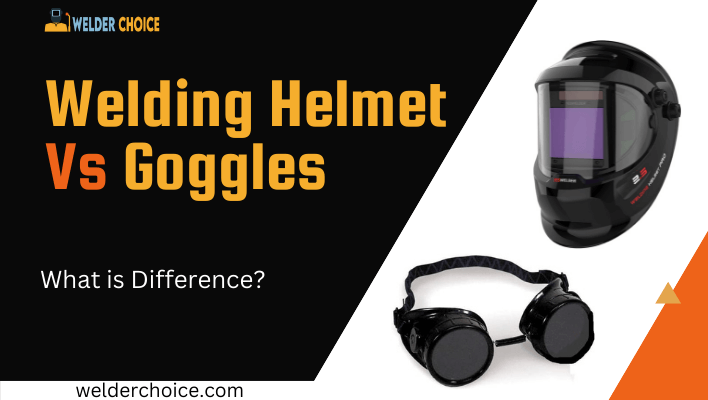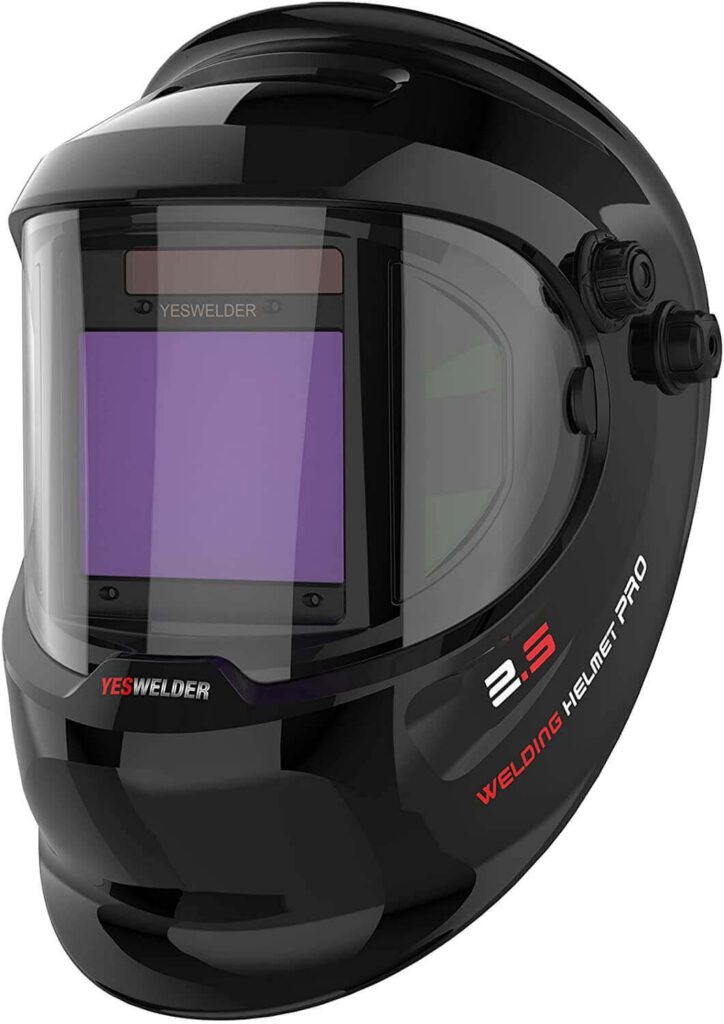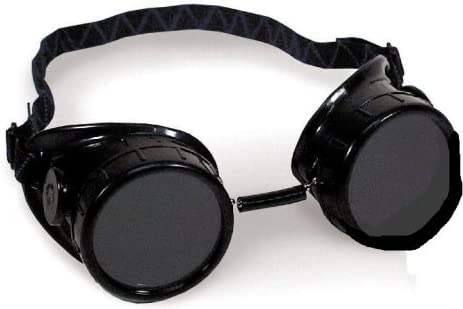Welding Helmet Vs Goggles, What is the difference,
Helmets and welding goggles are crucial pieces of safety equipment because they shield the welder from strong light and erratic spatter while welding. Since the two are incomparable, intended to serve distinct objectives, and both essential for the welder’s safety, the debate about welding vs. helmet makes no sense on a technical level. Without the helmet and goggles for welding, you could get a welder’s eye, also known as arc eye, a severe medical condition brought on by an enlarged cornea.
Goggles are less bulky and more lightweight, but they solely provide eye protection. Helmets provide complete protection for the eyes and face, although they are heavier. This article outlines both options’ strengths and weaknesses so you can confidently choose.
Welding Helmet Vs Goggles
Welding Helmet Making
The best welding safety equipment for protecting the face and neck when welding is a helmet. Your skin and eyes would be protected if you wore a helmet. Helmets used to be notorious for having vision issues because users couldn’t see clearly through the lens. Depending on the sort of welding you are doing, modern helmets are made to allow you to adjust the lens to a shade that provides the most protection without impairing vision.
Additionally, the majority of contemporary welding helmets use innovative LCD technology with auto-darkening features. They can automatically darken to the shade that will provide you with the best protection. When compared to earlier models that required manually flipping the permanently darkened glass, this is such a big difference.
Additionally, welding helmets provide complete protection from UV rays that come from the welding arc, and UV light cannot pass through the welding helmet’s shell or lens.
The only drawback to welding helmets is their size, weight, and complexity.
Types
The six primary categories of welding helmets are:
The most basic type of welding helmet is a passive helmet. It lacks any flashy features but is carefully constructed with high-quality materials and is consequently quite effective. You will be shielded from UV rays, flying debris, and the intense heat produced by welding.
The most excellent thing about a passive welding helmet is how inexpensive it is, which makes it the ideal choice for new welders or anyone on a tight budget.
The best helmet is the one that automatically darkens during welding. The auto-darkening helmet has an automatic lens, as opposed to the passive helmet, which requires you to manually change the lens. It senses the light emitted while welding and adjusts the lens to provide the greatest level of protection. Auto-darkening helmets are expensive, despite being very useful and convenient.
Helmets that automatically darken can be powered by the sun. Some have a built-in battery that cannot be changed but can be recharged using solar power. It is incredibly cost-effective and turns the lens off automatically when not in use. Due to their lack of readiness for usage, most welders are reluctant to employ solar-powered helmets. A day before a project, you must set them in the sun to recharge.
Battery-operated helmets: If a welder finds it challenging to manually adjust the lenses, just imagine how challenging it must be to check that the helmet is charged in the sun for the following day’s use. Any welder can change batteries considerably more quickly.
Welding helmet with fixed-shade lenses: These helmets have a standard shade level of 10. They are perfect for working on a single type of welding project because they don’t adjust to different torch brightness levels.
Helmets with variable-shade lenses has a feature that, in contrast to fixed-shade lenses, enables the lens to adjust to the varied colors and levels of brightness produced by the welding torch. Both fixed-shade helmets and variable-shade helmets offer excellent protection, although the latter greatly improves the welder’s visibility.
When utilizing a Stick, TIG, MIG, or MMA welder, the YESWELDER welding helmet continues to be a popular choice. It offers improved clarity with true color vision and has an extremely big viewing area for a helmet.
Welding Goggles making
With the exception of being larger and more durable, welding goggles are very similar to spectacles. They are precisely made to stop dangerous welding components from reaching your cornea during welding and have filters that reduce glare without impairing your vision.
Industry experts 1 contend that since your eyes can’t handle the strong light, you should never weld with them open. You still need to shield your eyes from the invisible optical radiation even if you were strong enough to endure the welding light.
A severe medical disease called photokeratitis, which can take up to 48 hours to go away, can occur if you don’t shield your eyes when welding. The worst-case scenario is losing vision.
Welding goggles are the very least you must wear if wearing other welding gear like a helmet causes you undue fatigue. Remember that even if you merely wear welding goggles while arc welding, the bright light will still expose the skin of your face and neck to dangerous UV radiation.
Types
Based on the numbers assigned to the lens shades, there are many types of welding glasses. The lens’s darkness is indicated by the shade number, and a wide range of shades is advised for different kinds of welding. Higher shade values indicate a brighter arc during the welding process.
Shade 3 is used for soldering and torch brazing.
Depending on the amperage utilized, shades 8–12 is used for stick welding, GMAW/MIG welding, and GTAW/TIG welding.
These are used for carbon arc welding and are shade 14.
Check out the YESWELDER true color auto darkening welding goggles if you’re looking for new welding goggles but aren’t sure which to choose. It provides a clear, true-color vision and is ideal for TIG, MIG, and MMA welding.
Difference between Welding Helmet Vs Goggles
Since safety and protection are their primary goals, welding goggles and welding helmets are not interchangeable, as was previously indicated. Here is a quick comparison that highlights the variations between the two safety equipment:
Viewing area
If you choose the right shade level for the type of welding you are doing, welding goggles offer a larger field of view and a sharper viewing of the welding arc. Compared to lighter colors, darker shades provide less visibility.
Even while modern helmets include auto-darkening features, they don’t provide the same level of the field of view and visibility as welding goggles. Professional-grade helmets with outstanding view screen sizes are available, however, they come at a high price.
Protection
Only your eyes are shielded from dangerous radiation by welding goggles, leaving your face and other exposed areas of skin unprotected. They’ll expose the rest of your face and neck to welding sparks, flying debris, and radiation.
On the other hand, helmets contain auto-darkening capabilities that offer the best protection against dangerous welding flush, and the shell, guards against welding spatter flying sparks, and molten debris. Helmets provide superior protection overall.
Convenience
When it comes to comfort, the majority of welders choose welding goggles over helmets. They are considerably smaller and lighter. The best protection is provided by helmets, but they are uncomfortable. Helmets may make you tired if you intend to weld for a long time.
Requirements for different types of welding
Due to their auto-darkening LCD technology, which adapts to varying arc brightness, welding helmets are available for almost all forms of welding. As for welding goggles, each type of welding requires a particular shade number. The same shade number for carbon arc welding cannot be used for MIG or TIG welding for the best protection.
Prices
More expensive than welding goggles are welding helmets. Depending on the brand and the design, a welding helmet can cost as little as $15 or as much as $100. Depending on the manufacturer and the color, welding goggles can cost as little as $0.80.
Conclusion
Our comparison of Welding Helmets Vs Goggles shows the differences and drawbacks of each safety item. A welding helmet is your best bet if you want complete protection from welding emissions because it shields not only your eyes but also the skin of your face and neck. Goggles are your greatest option if you desire a wide field of vision, and they are also your best option if cost is your main issue.
If you choose goggles, keep in mind that different types of welding require different hues. Helmets for welding are made to automatically adapt to various welding arcs. Never operate a welder with your bare eyes, regardless of the equipment you select. Additionally, exposing your skin could result in long-term consequences like cancer.

With 8 years of experience a senior welding instructor and safety equipment researcher and writes articles, reviews and guidelines on helmets and other welding and safety gears at Welder Choice, and other written works have been published in various publications.


